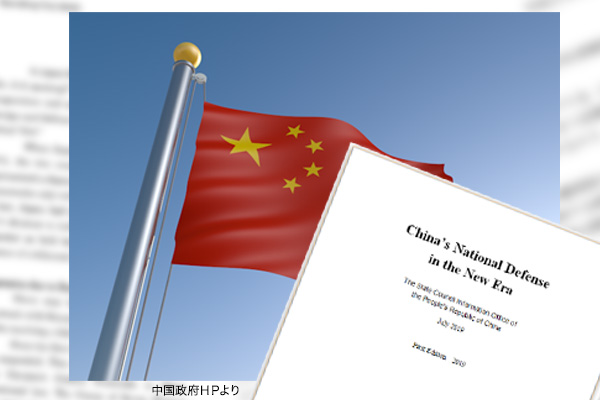China released its first defense white paper in four years on July 24. It is titled “China’s National Defense in the New Era” maybe because it is the first report since the reorganization of the People’s Liberation Army from late 2015. It specifies the assigned numbers of group armies and the names of fleets in each of the five theaters established through the reorganization. In this sense, the transparency of the Chinese defense white paper has been enhanced to some extent. Compared with Western defense white papers, however, the Chinese one is far less transparent.
Wide gaps between words and deeds
In Chapter II titled “China’s Defensive National Defense Policy in the New Era,” the paper says of China: “Never Seeking Hegemony, Expansion or Spheres of Influence.” It also says, “Since its founding 70 years ago, the People’s Republic of China (PRC) has never started any war or conflict.” China might have forgotten its invasion of India amid the Cuban Missile Crisis in 1962 and its incursion into Vietnam in the name of punishment in 1979.
“China is opposed to […] abuse of the weak by the strong,” the paper says several lines later, brushing off China’s actions against the Philippines and Vietnam in the South China Sea that represent the abuse of the weak by the strong. The paper has no comment on a ruling by an international arbitral tribunal three years ago, which dismissed China’s sovereignty over the South China Sea
In contrast, the paper indicates China’s extreme reluctance to directly confront with the United States that could abuse China. “The PLA will resolutely defeat anyone attempting to separate Taiwan from China […] at all costs,” it says, talking tough to conceal China’s weakness. China will take much more time to develop military capabilities to do so. Although China may have to deploy amphibious ships for transporting massive army and marine units to invade into Taiwan, China’s construction of Type 071 amphibious transport dock ships has been slower than that of destroyers or submarine. Type 071 construction has ended with only eight ships completed. China may have to deploy multiple Type 075 amphibious assault ships equivalent of the U.S. Navy’s 40,000-ton Wasp-class amphibious assault ships. However, no Type 075 ship has been commissioned. China may take more than 10 years to deploy the required number of such ships.
Tricky defense expenditure comparison
Chapter V titled “Reasonable and Appropriate Defense Expenditure” uses graphs showing defense expenditure as a percentage of GDP and the government expenditure to describe how modest China’s defense expenditure is in comparison with defense spending levels in other countries. However, defense expenditure published by China excludes costs for arms acquisition from abroad, research and development, and for paramilitary forces such as reservists and militias. If computed in the same way as seen in other countries, China’s defense expenditure would be double or triple the published level, according to the U.S. Department of Defense and think tanks in neutral countries. This is a common sense among experts.
Furthermore, the paper fails to clarify that the official Chinese defense expenditure continued double-digit annual growth for nearly 30 years from 1989 when the Tiananmen massacre occurred to 2015. Although the paper notes the number of troops has declined as time has gone by, China’s effective combat capabilities have dramatically been enhanced through mechanization and informatization.
If Japan that is inferior to China in military capabilities accepts the deceptive Chinese defense white paper as representing truth and is complacent with its current defense spending level, there will be terrible consequences. Don’t be deceived.
Fumio Ota is a senior fellow and a Planning Committee member at the Japan Institute for National Fundamentals. He is a retired Vice Admiral of Japan’s Maritime Self-Defense Force.


